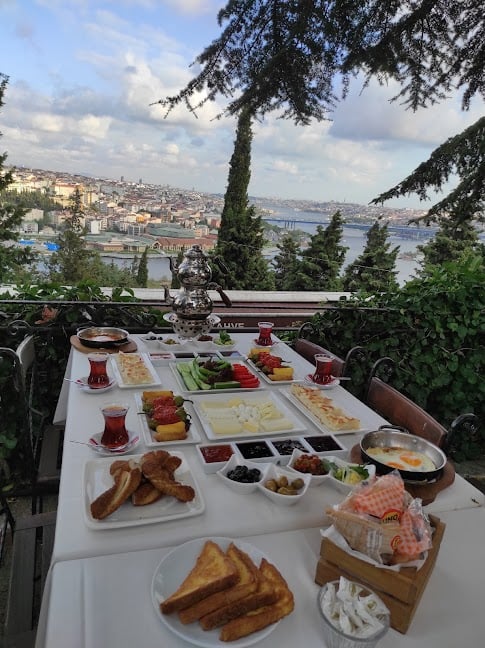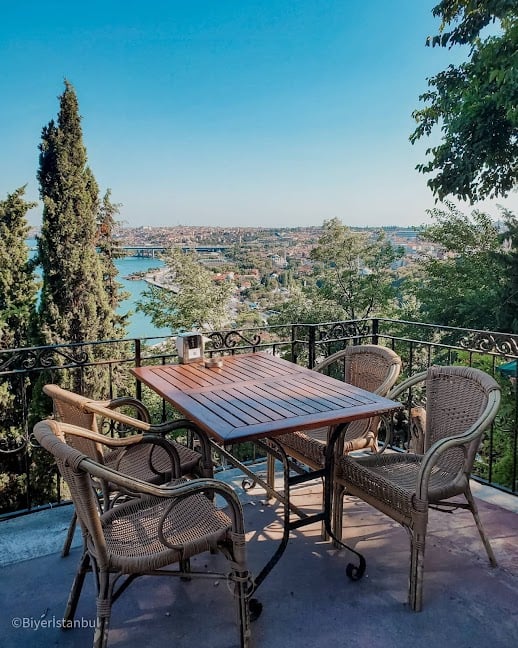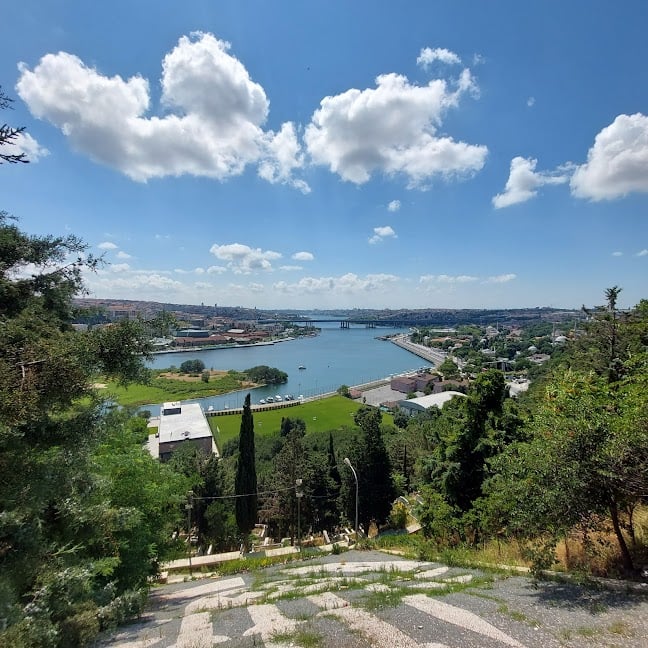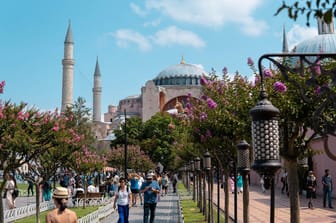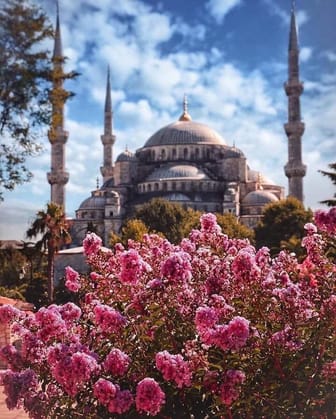From modern to traditional, from luxury to convenient…dining, shopping and sightseeing in this amazing city! You’ll find several options for great accommodation, as well.
Istanbul is where Europe meets Asia and here you'll encounter elements from both continents.
Mind yourself - this city is huge and really crowded. Traffic can be horrific at times and getting from one point to another could take up some time. Still, it's full of savory contrasts, echoes of the past and glimpses of the future and could easily get you addicted!
💡Tip: visit the less-touristy areas Fatih, Fener and Balat!
Highlights:
☕️ Turkish coffee - whether it’s made in sand, over fire or on stovetop, it is prepared in a “cezve” (ibrik) using very finely ground coffee beans without filtering;
🫖 Turkish tea - called “çay” (pronounced chai) in Turkish - is a kind of black tea brewed in a dual teapot and served in tulip-shaped small glasses called “ince belli”.
🥨 Simit (Turkish Bagel) a sesame-bathed, circular Turkish bread. Very common - the cheapest street food in Turkey.
🍥 Turkish delight - also called lokum, jellied confection with different flavours (may contain pieces of fruits/nuts) commonly found in the markets.
🥟 Baklava - is a layered pastry dessert made of filo pastry, filled with chopped nuts, and sweetened with syrup or honey. It was one of the most popular sweet pastries of Ottoman cuisine.
🏺 The Nargile, also known as hookah or hubble-bubble or sheesha or Turkish water pipe, is an old tradition in Turkey for smoking Turkish tobacco (plain or fruit flavored - with or without nicotine).
🧿 Evil Eye Symbol - the Nazar Boncuk symbolizes the jealous and envious look of others, which, according to the popular belief, would have the power to cause various misfortunes to a person or his property. Turkish people believe that this amulet protects its holder from the bad energies by absorbing them.
In addition, Turkey is famous for its sweets/desserts, ceramics, silver/gold jewelry, spices. Don’t forget to bargain - it is kind of a national sport. 😉


